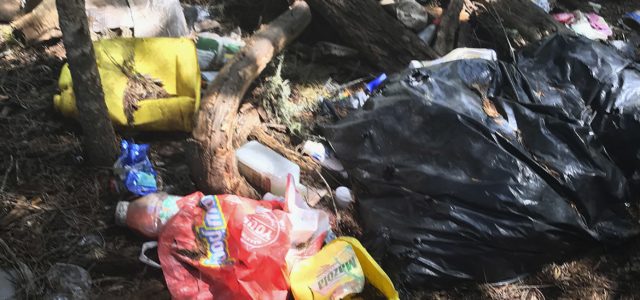Toxic pesticides found at most illegal California pot farms
Uncategorized August 31, 2018 MJ Shareholders

SACRAMENTO, Calif. (AP) — Nine of every 10 illegal marijuana farms raided in California this year contained traces of powerful and potentially lethal pesticides that are poisoning wildlife and could endanger water supplies, researchers and federal authorities said Tuesday.
That’s a jump from chemicals found at about 75 percent of illegal growing operations discovered on public land last year, and it’s six times as high as in 2012.
Federal and state officials launched a summer-long crackdown driven in part by new concern over the increase in the use of the highly toxic pesticide carbofuran.
Researcher Mourad Gabriel, one of the few researchers studying the ecological impact of illicit grow sites, said the pesticide is so powerful that a quarter-teaspoon can kill a 300-pound bear.
He and fellow researchers at the Integral Ecology Research Center in northwestern California found 89 percent of sites this year have been confirmed or are strongly suspected to be contaminated with what he called “highly deadly toxic chemicals.”

The crackdown aided by $2.5 million in federal money led to 95 growing sites and the removal of more than 10 tons of fertilizer, pesticides and chemicals.
U.S. Attorney McGregor Scott said federal authorities are concentrating their efforts on hazardous illegal grows on public land instead of targeting California’s new recreational marijuana industry.
“This isn’t about the marijuana, it’s about the damage that’s being done,” he said in an interview before a news conference to announce the findings. “What is happening here is illegal under anybody’s law.”
California Attorney General Xavier Becerra, who leads the nation’s largest marijuana eradication program, said state drug agents last week found gallons of carbofuran being added to irrigation water at an illegal site in northwestern California. The water ultimately makes it into the water supply in a rugged, mountainous area near the city of Redding.
Investigators suspect some illegal grows are now being moved into agricultural areas where they blend in alongside legitimate marijuana and other crops. For example, they raided two illegal marijuana farms south of Sacramento this summer based on information on a cellphone found at an illegal grow in the Mendocino National Forest last year, Scott said.
“Because of the legalization, our operating theory is that it’s a whole lot easier to go set up a greenhouse in the valley somewhere than it to have to pack all of this stuff into the national forest,” he said in the interview.
The pot is mostly headed out of state and could not pass California’s stringent standards for legal weed because traces of the toxic chemicals are often found in the plants, officials said.
U.S. Forest Service Chief Forester Vicki Christiansen estimated that 1.2 billion gallons of scarce water are diverted to illicit grows in California national forests each year. And
California is not alone, with illegal drug traffickers found in 72 national forests in 21 states, she said, calling it “a major national problem.”
Authorities seized nearly 640,000 plants, more than 25,000 pounds of processed pot, more than 80 firearms, $225,000 in cash and made nearly 80 arrests in California. They hauled out nearly 60 tons of trash, including nearly 84 miles of irrigation hose.
Work crews cleaned up 160 toxic sites, but have a waiting list of 830 contaminated sites, some found eight years ago and still awaiting their turn.
Part of the problem is the lethal pesticides pose a danger to cleanup crews, Scott said in the interview.
“If they go in and there’s a certain level of toxicity, they just have to back away and then let time go by before they can safely go in and try to do the reclamation,” he said.
MJ Shareholders
MJShareholders.com is the largest dedicated financial network and leading corporate communications firm serving the legal cannabis industry. Our network aims to connect public marijuana companies with these focused cannabis audiences across the US and Canada that are critical for growth: Short and long term cannabis investors Active funding sources Mainstream media Business leaders Cannabis consumers








